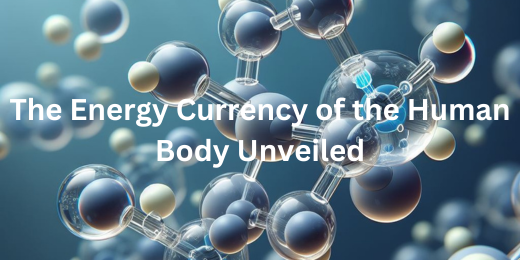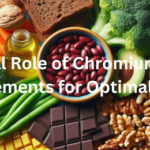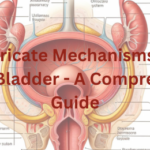ATP (Adenosine Triphosphate)
ATP (Adenosine Triphosphate) is the fundamental energy currency of the human body, playing a pivotal role in cellular energy metabolism. This molecule, consisting of adenosine and three phosphate groups, holds and releases energy for various biochemical processes. It’s akin to a rechargeable battery, storing and delivering energy as needed.
When a cell requires energy, ATP’s high-energy phosphate bonds are hydrolyzed, releasing the required energy for cellular activities. This process transforms ATP into ADP (Adenosine Diphosphate), ready to be recharged through cellular respiration. Essentially, ATP acts as a universal energy carrier, fuelling everything from muscle contractions to DNA synthesis.
Without ATP, essential life processes would grind to a halt. Its significance in cellular function highlights ATP’s status as the primary energy molecule that keeps our bodies functioning optimally.
We kindly encourage you to explore this link to learn about “The Unsung Heroes – Exploring the Role and Function of Tonsils in Our Health”.
ATP Synthesis: The Powerhouse Process
Mitochondria, often referred to as the cell’s powerhouses, are the birthplace of ATP (Adenosine Triphosphate), the primary energy currency of the human body. These tiny, double-membraned organelles play a monumental role in cellular respiration, the process by which ATP is synthesized.
Within the mitochondria, glucose and oxygen undergo a series of intricate biochemical reactions, ultimately yielding ATP molecules. This process, known as oxidative phosphorylation, involves the transfer of electrons through a chain of protein complexes, driving the formation of ATP.
It’s akin to a meticulously orchestrated dance, where molecules move in precise sequences to generate ATP. This energy-rich molecule is then dispatched to power various cellular functions. Understanding the vital role of mitochondria in ATP production unveils the intricacies of how our cells derive the energy needed to carry out essential tasks.
Would you like to know about the importance of glucose in our human body? Please click here.
Link: https://uyironline.in/role-of-glucose/
ATP Breakdown: Fuelling Cellular Activities
ATP (Adenosine Triphosphate) breakdown is the key to fuelling cellular activities, a process known as ATP hydrolysis. This vital mechanism involves the breaking of high-energy phosphate bonds within ATP molecules, liberating the stored energy.
This energy release powers various enzymatic processes, which are essentially biological catalysts that facilitate chemical reactions within cells. Enzymes act as precision instruments, ensuring that cellular work proceeds at optimal rates. The liberated energy is harnessed to perform an array of tasks, from muscle contractions to DNA synthesis.
It’s akin to unlocking a reservoir of energy precisely when and where it’s needed. This process of ATP breakdown and subsequent energy utilization is the cornerstone of cellular function. It ensures that the human body has the energy required to maintain life-sustaining processes, underscoring ATP’s crucial role as the primary energy currency.
We warmly invite you to click on this link to discover about “Folic Acid – Fueling Your Body’s Vitality with Vitamin B9”.
Link: https://uyironline.in/importance-of-vitamin-b9/
ATP and Muscle Contraction
The relationship between ATP (Adenosine Triphosphate) and muscle function is fundamental to physical activity. When muscles contract, they require energy, and this energy is provided by ATP. ATP provides the necessary fuel for muscle fibers to shorten and generate force. Without ATP, muscles would be unable to function effectively.
Moreover, ATP’s role in sustained activity is crucial. During prolonged or strenuous exercise, muscle cells require a constant and abundant supply of ATP. This is why processes like cellular respiration, which produces ATP, are upregulated during physical activity. It ensures that muscles have a continuous source of energy to sustain performance.
Therefore, ATP stands as the linchpin of muscular function, enabling everything from subtle movements to vigorous workouts. Understanding the connection between ATP and muscle contraction illuminates the profound impact it has on our physical capabilities.
We cordially invite you to explore this link to understand about “Insulin – The Key Hormone for Blood Sugar Control and Diabetes Management”.
Link: https://uyironline.in/importance-of-insulin/
Regulation of ATP Levels
Regulation of ATP levels is crucial for maintaining cellular homeostasis and energy balance within the human body. Homeostasis ensures that internal conditions remain stable and optimal for cellular function. This includes regulating ATP levels, the primary energy currency.
When ATP levels drop, feedback mechanisms kick in to stimulate ATP production. One such mechanism involves the enzyme AMP-activated protein kinase (AMPK), which initiates processes to generate more ATP. On the other hand, when ATP levels are high, these feedback mechanisms inhibit further ATP production, preventing an excess buildup.
This delicate balancing act ensures that cells have the energy they need without an unnecessary surplus. By finely tuning ATP levels, the body efficiently manages energy resources, enabling cells to carry out their functions effectively. Understanding this regulatory process sheds light on the intricate mechanisms that support our cellular vitality.
Clinical Implications: ATP and Health
ATP (Adenosine Triphosphate) plays a critical role in human health, and its deficiency can have significant consequences. When there’s a shortfall in ATP production, it can result from various factors such as metabolic disorders, certain medications, or even ageing. This deficiency leads to a decrease in available energy for essential cellular functions.
Consequently, individuals may experience symptoms ranging from fatigue to muscle weakness. Addressing ATP deficiency is crucial for maintaining overall health and vitality. Therapeutic interventions focus on restoring cellular energy levels. This may involve dietary adjustments, exercise regimes, and in some cases, supplementation with compounds that support ATP production.
By recognising the pivotal role ATP plays in our well-being, we can implement strategies to ensure our cells have the energy they need to function optimally, ultimately contributing to a healthier and more vibrant life.



